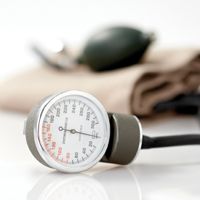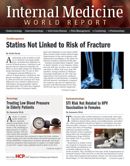Kids, Cholesterol and Blood Pressure: Tracking Change
The National Health and Nutrition Examination Survey (NHANES) has tracked changes in dyslipidemia and blood pressure in children since 1988. A new report in JAMA Pediatrics indicated that serum lipid concentrations improved in American children and adolescents since 1988.

Clinicians expect to see elevated cholesterol and blood pressures in about half of middle-aged and older adults — the incidence of both increases with age.
In children, high cholesterol and hypertension are unexpected but surprisingly common.
The National Health and Nutrition Examination Survey (NHANES) has tracked changes in dyslipidemia and blood pressure in children since 1988. A new report in JAMA Pediatrics indicated that serum lipid concentrations improved in American children and adolescents since 1988.
Blood pressure parameters remain of concern.
These investigators, all associated with the US Centers for Disease Control and Prevention (CDC), used cross-sectional survey data from NHANES, which included only community-dwelling individuals. They looked at children and adolescents from 8 to 17 years who had lipid concentrations (n = 1482) and BP (n = 1665) measurements available. The investigators used standard measures of dylipidemia and blood pressure in children to define abnormal results.
In 2011-2012, approximately 20% of children and adolescents had elevated cholesterol. The percentage of children with elevated triglyceride concentrations decreased from 10.6% in the year ending in 2000 to 7.8% in the year ending in 2012. Similarly, the proportion of children and adolescents who had elevated HDL-C (12.8%) and non HDL-C (8.4%) fell from 17.9% and 13.6% respectively. The investigators called these improvements “modest,” and indicated more work was necessary to extend this trend because childhood dyslipidemia predicts persistent dyslipidemia.
In the same time period, 11% of children and adolescents had high or borderline blood pressure, which was similar to results in previous time periods. In study subjects, 3.1% had clinically diagnosable high blood pressure. This compares to a rate of 3% in 1999-2000.
The investigators noted that pediatric obesity rates, which are often associated with dyslipidemia and elevated blood pressure, had not fallen. Referring to this as paradoxical, researchers expressed other societal changes including a decrease in pediatric smoking rates and lower average number of hours watching television could have contributed to the modest improvements.
